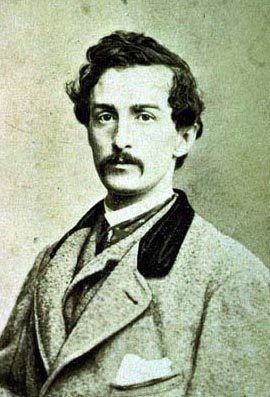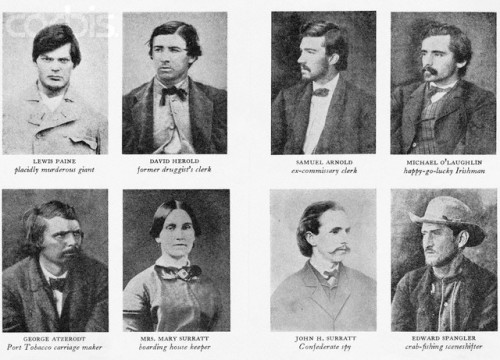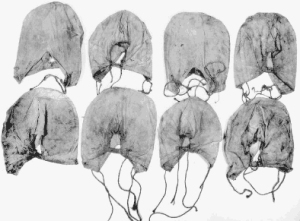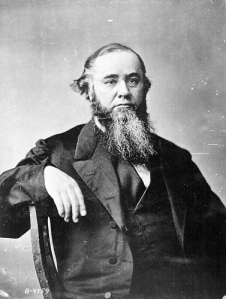 It was April 24, 1865 – ten days since President Lincoln was assassinated – and his killer still remained at large. On the night of April 14, John Wilkes Booth had shot the president in the head, jumped on a horse, and slipped across the Potomac River undetected. He had disappeared into Maryland, a state that had stayed in the Union in the Civil War (which had ended just days earlier), but was sprinkled with Confederate spies. Speculation was that Booth would cross Maryland into Virginia with the help of fellow Confederate sympathizers.
It was April 24, 1865 – ten days since President Lincoln was assassinated – and his killer still remained at large. On the night of April 14, John Wilkes Booth had shot the president in the head, jumped on a horse, and slipped across the Potomac River undetected. He had disappeared into Maryland, a state that had stayed in the Union in the Civil War (which had ended just days earlier), but was sprinkled with Confederate spies. Speculation was that Booth would cross Maryland into Virginia with the help of fellow Confederate sympathizers.
The 16th New York Cavalry was on Booth’s trail but no leads had resulted in his capture, despite a whopping $100,000 reward promised by the War Department. So on April 24, Major W.S. Hancock issued a new proclamation appealing to the black population of Washington, Maryland, and Virginia, for their help in the manhunt. Hancock calculated that Booth could not escape without encountering blacks. The following proclamation was printed on letter size handbills and distributed:
THE MURDER OF PRESIDENT LINCOLN.
APPEAL TO THE COLORED PEOPLE!
HEADQUARTERS MIDDLE MILITARY DIVISION
Washington, D.C., April 24, 1865
To the colored people of the District of Columbia and of Maryland, of Alexandria and the border counties of Virginia;
Your President had been murdered! He has fallen by the assassin and without a moment’s warning, simply and solely because he was your friend and the friend of our country. Had he been unfaithful to you and to the great cause of human freedom he might have lived. The pistol from which he met his death, though held by Booth, was fired by the hands of treason and slavery. Think of this and remember how long and how anxiously this good man labored to break your chains and to make you happy. I now appeal to you, by every consideration which can move loyal and grateful hearts, to aid in discovering and arresting his murderer. Concealed by traitors, he is believed to be lurking somewhere within the limits of the District of Columbia, of the State of Maryland, or Virginia. Go forth, then, and watch, and listen, and inquire, and search, and pray, by day and night, until you shall have succeeded in dragging this monstrous and bloody criminal from his hiding place….
Large rewards have been offered…and they will be paid for the apprehension of this murderer….But I feel that you need no such stimulus as this. You will hunt down this cowardly assassin of your best friend, as you would the murderer of your own father….
All information which may lead to the arrest of Booth, or Surratt, or Harold, should be communicated to these headquarters….
W.S. Hancock
Major General U.S. Volunteers
Commanding Middle Military Division

![1115 john tenniel_thumb[2] "The Mad Hatter's Tea Party." ="Though he did not create the expression "mad as a hatter," author Lewis Carroll did create the eccentric character in his book, Alice in Wonderland (illustrations by Sir John Tenniel), first released in London in 1865, coincidentally, the year Lincoln was assassination. The hatter in the book is an eccentric fellow with wacky ideas and incoherent speech, attributes attributed to hatters of the day. Mercury was used in hatmaking and its poisonous vapors caused neurological damage on the hatters.](https://lisawallerrogers.files.wordpress.com/2009/06/1115-john-tenniel_thumb2.jpg?w=500)

 April 14, 1865, was one of the happiest days of Abraham Lincoln’s life. It was Good Friday. General Robert E. Lee had surrendered five days earlier and the Civil War was over. The Union had been saved. Lincoln had a relaxing breakfast with his 21-year-old son Robert, whom he called “Bob,” who had just arrived for a visit.
April 14, 1865, was one of the happiest days of Abraham Lincoln’s life. It was Good Friday. General Robert E. Lee had surrendered five days earlier and the Civil War was over. The Union had been saved. Lincoln had a relaxing breakfast with his 21-year-old son Robert, whom he called “Bob,” who had just arrived for a visit. 






















